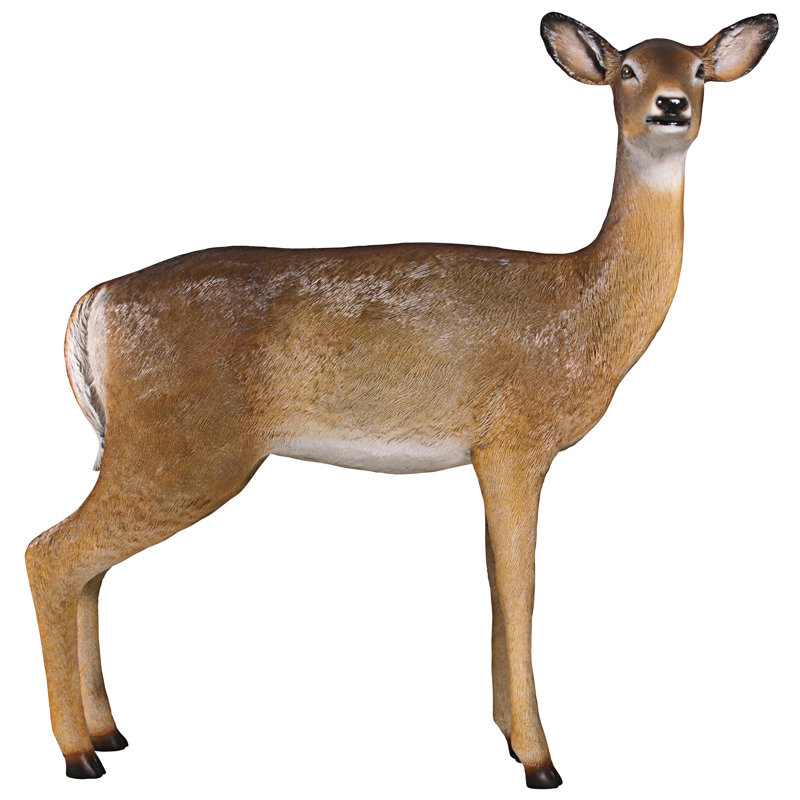What is a female deer called?
A female deer is called a doe. A male is a buck. From Middle English do, from Old English dā (“female deer”), from Proto-Germanic *dajjǭ (“female deer, mother deer”), from Proto-Germanic *dajjaną (“to suckle”), from Proto-Indo-European *dʰeh₁(y)- (“to suck (milk), to suckle”).
A male red deer is called a ‘stag‘, a female is called a ‘hind’. Both male and female reindeer grow antlers, while in most other deer species, only the males have antlers. A male’s antlers can be up to 51 inches long, and a female’s antlers can reach 20 inches. Unlike horns, antlers fall off and grow back larger each year.
Search the treasure map signpost found in paradise palms
How to identify a female deer?
Female deer, known as do, look and behave differently from their male counterparts. However, identifying a female deer can be challenging if you don’t know what to look for. Follow these simple steps to help you accurately identify a female deer.

Notice the lack of antlers on a female deer, such as a female white-tailed deer or female mule deer. While male deer often have large antlers; these antlers are absent in most species of female deer. Some females, however, may have small stumps of antler.
Estimate the size of a female deer. Female deer are smaller in weight and size than male deer. Female deer typically weigh between 50 and 250 pounds and are around three feet tall as adults.
Look for a female deer with her cubs (fawn). Female deer give birth to between one and three babies at a time, and these babies stay with their mother deer for up to a year. Therefore, you will often see female deer with their young. Male deer, on the other hand, do not spawn with their young, but you may see them alone or with another (male) deer.
Try to look for signs of nipples or mammary glands. Females have four mammary glands and nurse their fawns for about four months.

Have you ever heard funny female deer names, such as Aunt Deer or She Deer? If yes, you might be curious about what exactly should be the term for the feminine gender of deer. However, it is not easy to identify male and female deer right after birth. Keep rolling to read more!
What is a female deer called?
So far, three possible terms doe, hind, and cow are used for female deer in English. Naming female deer as a doe, hind or cow is dependent on the species and size of the species. Doe is widely used for females of relatively smaller species of deer. The hind is used for red deer females only, a cow is rarely used to represent females of the largest deer species.
The conventional pattern of buck/doe and fawn for male/female/young is the most popular one not only for deer but also for other mammals like Kangaroo or rabbit. However, cow/bull/calf has rarely used the pattern for female/male/young. These naming patterns are not fixed as language keeps on changing with time.
The white-tailed deer
Wisconsin State Animal
The white-tailed deer is an animal of incredible beauty and power, capable of leaping high fences in a single jump. This deer is one of Wisconsin’s official wild animals and the most abundant big game animal in all of North America. Read on to learn more about the white-tailed deer.
Oh, dear deer
The white-tailed deer is a large brown animal found throughout Wisconsin. It prefers to live near forests and agricultural areas, such as farm fields, because they provide food and shelter. This animal has hooves, a slender body, and long, slender legs. Don’t be fooled by its slim legs. The deer can run at speeds of up to 40 miles per hour, jump over 9 feet and swim at 13 miles per hour. Wow, how fast!
The male animal is the male deer. It is easy to identify in summer and fall, as each year, it grows a set of horns (also called antlers). The antlers are made of bone and have antlers called tips. An antler with many points indicates that the animal is in good health and lives in suitable habitat. The horns of a male deer reach their maximum growth in the fall. A male deer can be seen rubbing his antlers against trees in early fall to shed the velvety soft fur that protects his new antlers. As the animal removes that kind of velvet, the tips of the horns take on an ivory colour at the tips. In winter, the male deer changes horns.
During the mating season, also known as “heat,” male deer fight for territory and the privilege of mating with the most significant number of females. Animals bang their horns to claim territory. In general, they don’t get hurt during these fights. A male deer also marks its territory by stomping on the ground to leave “marks” on the floor and by rubbing its antlers against trees in what is known as a “deer rub.”
Do a deer a female deer
The female animal is called the doe. During May or June, the doe gives birth to young, called fawns. A doe can have one, two, or three fawns at a time. The fur of a fawn is reddish-brown with small white spots. This colouring helps it to go unnoticed in the forest. It is known as camouflage and is one of an animal’s methods to adapt to its environment. Fawn spots disappear when it completes its first coat (it gets its winter coat), around five months of age.
The white-tailed deer is herbivorous; that is, it feeds on plants. In summer, eat tree leaves, broadleaf grasses, and berries, and in fall, acorns, grass, and herbs. In winter, opt for white cedar leaves, twigs, nuts, fruits, and corn, and in spring, for hay, wheat, and alfalfa. The deer has a four-chambered stomach that allows it to digest these plants. Swallows food quickly and hardly chews. Then, while resting, he regurgitates the food and chews it again, the terror of lovers of good manners!
Deer to the dentist!
Incredibly, the age of a deer is established by inspecting its teeth, not the tips of its horns. A trained biologist examines not only the type of deer tooth but also its deterioration. Deer also have baby teeth like humans. They are born with four teeth, and in the following months, they develop incisors and milk premolars. By the time they are around 18 months of age, permanent teeth have replaced baby teeth. An adult has six incisors and two canines on the lower front, six premolars, and six molars on both the lower and upper back. By quickly looking at the premolars, a biologist knows whether the animal is a fawn, a young deer, or an adult deer.
After the white-tailed deer has all of its permanent teeth come in, biologists observe the deterioration of the molars, which wear out about 1 millimetre per year. To determine the age of the deer, the height of the tooth above the gum line is used on all three molars.
Traces of time
Deer leave behind many tracks that tell us some interesting things about them. It’s a lot of fun looking for these footprints.
If you have the chance to take a walk in the woods this fall, here are some things to look for:
- Footprints: the footprints of the deer are heart-shaped. The hooves or claws on the feet of the deer are responsible for the tracks. The pointed end of the path indicates which way the deer was going.
- Trails: The deer travels on narrow roads called trails. Trails often connect where the deer forages with where it rests. Can you find a deer trail? Where do you think the deer was going?
- Deer resting places: just like you use the bed in your room, the deer lies down in a spot on the floor to rest. These are the resting places of the deer. They are usually surrounded by plants or shrubs that protect them from rain or snow. These sites are easy to spot in the snow. In general, they are between 3 and 4 feet long and 1 ½ foot wide.
- Deer Rub: Deer mark their territory by rubbing the bark of trees with their horns. It is called a “deer rub.” Search the trees between September and November. These marks are generally one to two feet high from the ground (see photo).
- Feeding signs: The deer do not have upper teeth in the front of the mouth. Instead, it uses its back teeth to pluck the twigs and eat them. How would the tip of a twig plucked by a deer differ from the tip of a twig plucked by an animal with pointed teeth?
do a deer a female deer
